Many
new species have been described recently in the orchid family, not only
in Brazil, which is considered one of the richest in species of orchids
(Dressler 1981) and possibly the richest in plant species as a whole (Giulietti
et al. 2005 ), but also in the rest of the world. .
This "phenomenon"that occurs in Brazil demonstrates two possible
distinct situations :
1) Our knowledge has advanced considerably over time, allowing the discovery
of new species, despite more than two centuries of study by many Brazilian
or foreigner naturalists and biologists who have been researching our
flora
or
2) The "new species" are actually "old known friends"
(or not so well known) with only a different guise.
It may be a bit of both, but probably with the balance shifting to descriptions
of "new species" that are nothing more than re-description of
known species, which present only morphological variation.
In many cases, the limits between closely related species has been somewhat
unclear, leaving it to the subjectivity of the choice of the taxonomist,
causing one of the main criticisms related to the work of these scientists.
This should lead us to some interesting reflections:
- Which is the limit of two species? How, effectively recognize the limits
between two close related species?
First, we must bear in mind the concepts of species, which vary with the
area of science. There are concepts biological, ecological, phylogenetic,
typological, etc.. (For more detail of these concepts see this link: http://www.icb.ufmg.br/lbem/aulas/grad/evol/especies
The last (typological concept) is adopted by classical taxonomy. At the
moment the description of a new species, a typus should be elected (in
the case of plants, a dried specimen and preserved as exsiccate in a herbarium,
deposited in a botanical collection, with free access to the scientific
community). This specimen will serve literally as the "model "
for the species. Plants that are different from that typhus, grosso modo,
are considered another species.
- But what is to be different from typus? How much difference is needed
for a species to be considered different from another? And how much of
this difference is only a variation between individuals of different populations
or even variation among individuals of the same population? Should this
be taken into account in the description of "new species"?
Take for example the human species. It is well known the fact that not
everyone is equal. There is, for example, strong geographical variation
among humans. The ethnic groups have clear different physical characteristics.
We have straight hair, curly, short, long or even have hair, have skin
tones and eye colors different, have different heights and constitution.
We can not say that two individuals who suffer from dwarfism and gigantism
are different species. We are a single species. A highly polymorphic species,
but a single species.
However, much of the vision that is employed in distinguishing species
of animals is not shared when new species of plant are described.
Narrower or longer lateral lobes, a callus of the lip more robust, sepals
and petals slightly narrower or wider, inflorescence with few flowers
more or less, a little bigger or little smaller plant, coloring ... All
are plastic characteristics, ie, can vary greatly between individuals
of different populations or the same population, often in consequence
of the environment. This represents a natural variation which living beings
are subject.
Knowing this variation is only possible when the population is analyzed
as a whole or at least several individuals in this population. Not knowing
the population can be misleading identification. Therefore, care should
be exercised when proposing a new species, precisely because of this variation.
- Is possible that the material analyzed in the description is not just
an individual variation within populations or among populations of particular
species?
- An example of strong intrapopulation variation can be observed in Figures
1 to 16, which show flowers of individuals Zygopetalum mackayi
Hook. (Figures 1 to 10) and Z. triste Barb Rodr. (11-16) and possibly
a hybrid between the two (figure 17) in Ibitipoca State Park. In just
a few miles in a trail to the west of the Park was possible to observe
the different shapes and colors, prominently in Z. mackayi.
The analysis of only one of these individuals in isolation can lead to
an erroneous conclusion about his identity and possibly a description
of a new species, since it does not correspond strictly to typus, which
does not occur when we know the existent intrapopulation variation.
Another variation that can be used as an example, it is well known to
growers (especially micro-orchids). The species Pleurothallis hypnicola
Lindl. (now accepted as a synonym of Pleurothallis fusca Lindl.)
presents a very broad spectrum of color (Figures 18 to 26). In this case,
it is unlikely that someone thinks that the forms presented in the figures
may represent different species, because it is a species well known and
well cultivated.
But if we consider that several other species not so well known may have
this range of variation, it is possible to have a misjudgment, leading
to the re-description of existing species.
The two cases cited above are based only on superficial aspects, as a
means of illustrating how can there be intra or interpopulational variation.
The next example comes from a deeper study, the taxonomic revision of
Pseudolaelia that aims to further establish the boundaries between
species of this genus, half of which were described in the last six years.
This study has used tools such as morphometric analysis of the flowers
and analysis of the DNA polymorphism, in addition to classical taxonomy
Figure 27 shows a population of dissected flowers Pseudolaelia geraensis
Pabst occurring in Nova Era (MG). You may notice a strong polymorphism
in the floral parts of these plants, especially in the lip. The unfamiliarity
of intrapopulational morphological variation could result in the description
of new species based on floral morphology that often defines the species
of this group, since the vegetative morphology is quite homogeneous.
Some studies published with the morphometric study of polymorphic species
have shown that morphological variation can be very large, and should
be taken into consideration in recognition of the identity of some species
(eg. Cardim et al. 2001, Carlini-Garcia et al . 2002, Pinheiro & Barros
2008, 2009).
Tools such as DNA, morphometric, enzymatic, anatomic analysis, among others,
have been used largely contributing to the taxonomy, when used in conjunction
with morphology. The use of these tools aims to assist the delineation
of species, genera and suprageneric groups, reducing the possibility of
errors and increasing our knowledge of the tree of life.
However, the "swelling" taxonomic led by the mistaken description
of new taxa, causes great confusion, making more and more difficult the
studies which aim these purposes, preventing even the making of a "simple
list" of species that our country has.
Figures 1 to 10
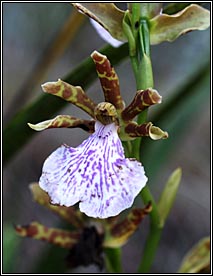 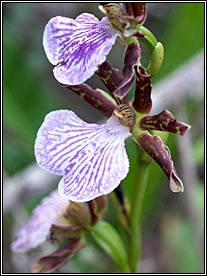 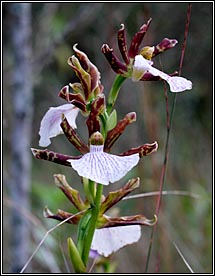
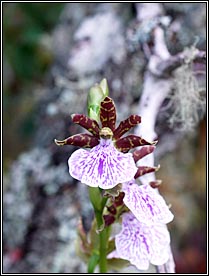 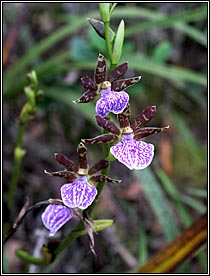 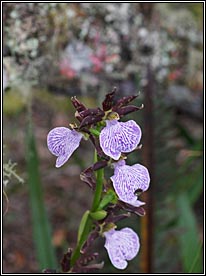
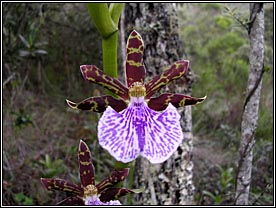 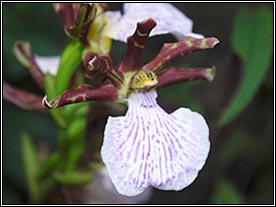
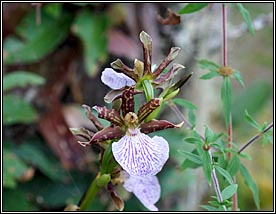 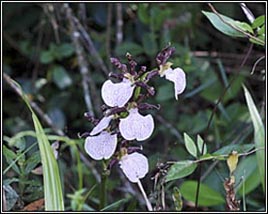
Figures 11 to 16
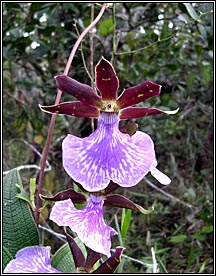 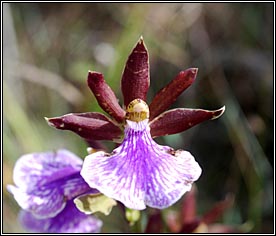
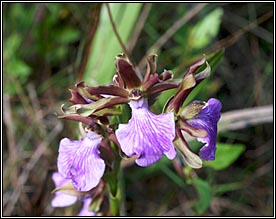 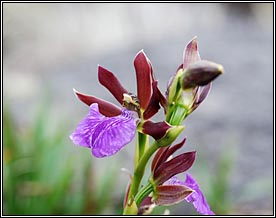
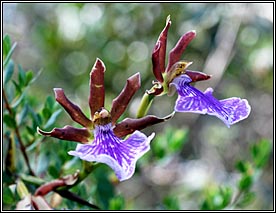 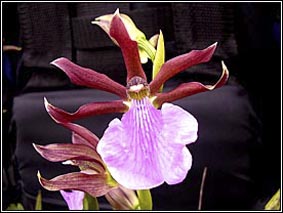
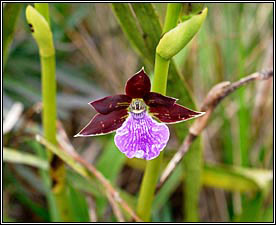
Figure 17
Figures 18 to 26
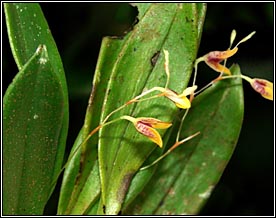 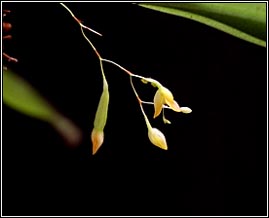
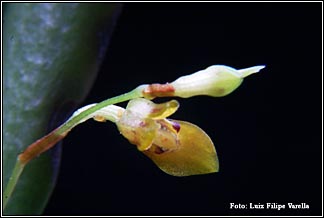 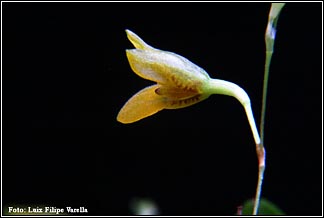
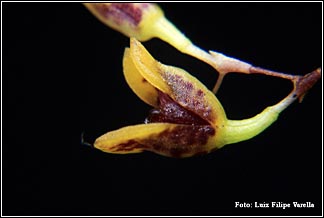 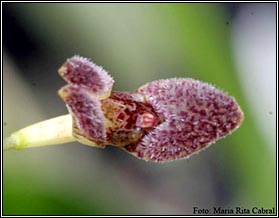
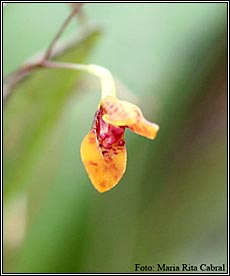 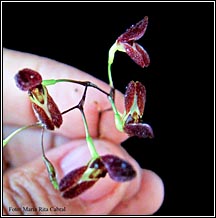 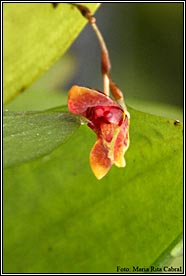
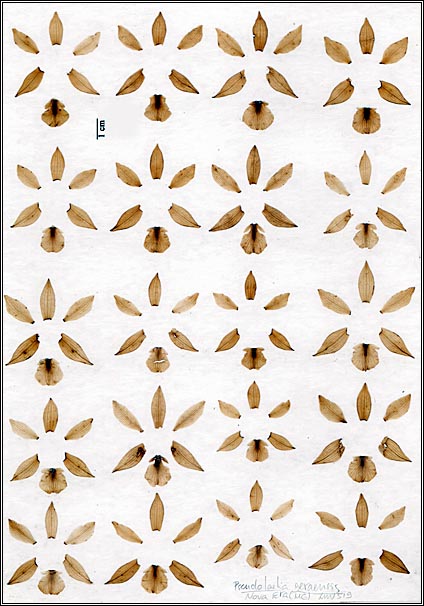
Figure 27
Acknowledgments
To Maria Rita Cabral and Luiz Filipe Varella, for reading, commenting
and photos.
Cited
references
Cardim, D. C.; Carlini-Garcia, L. A.; Mondin, M.; Martins, M.; Veasey, E. A.
& Ando, A. 2001. Variabilidade intra-específica em cinco populações
de Oncidium varicosum Lindl. (Orchidaceae – Oncidiinae)
em Minas Gerais. Revista Brasileira de Botânica 24(4): 553-560. Disponível
em: http://www.scielo.br/scielo.php?script=sci_arttext&pid=S0100-84042001000500010&lng=en&nrm=iso&tlng=pt
Carlini-Garcia, L. A.; van den Berg, C. & Martins, P. S. 2002. A morphometric
analysis of floral characters in Miltonia spectabilis and Miltonia
spectabilis var. moreliana (Maxillarieae: Oncidiinae). Lindleyana
17(3): 122-129.
Dressler, R. L. 1981. The orchids, natural history and classification. Harvard
University Press, Harvard.
Giulietti, A. M., Harley, R. M., Queiroz, L. P., Wanderley, M. G. L., van den
Berg, C. 2005. Biodiversidade e conservação das plantas no Brasil.
Megadiversidade 1(1): 52–61
Pinheiro, F. & Barros, F. 2008. Morphometric analysis of Epidendrum
secundum (Orchidaceae) in southeastern Brazil. Nordic Journal of Botany
25: 129-136. Disponível em: http://www3.interscience.wiley.com/journal/120818040/abstract?CRETRY=1&SRE
TRY=0
Pinheiro, F. & Barros, F. 2009. Morphometric analysis of the Brasiliorchis
picta complex (Orchidaceae). Revista Brasileira de Botânica 32(1):
11-21. Disponível em: http://www.scielo.br/scielo. php?pid=S0100-84042009000100003&script=sci_arttext
Luiz Menini Neto
Centro de Ensino Superior de Juiz de Fora
Juiz de Fora – MG
|


























